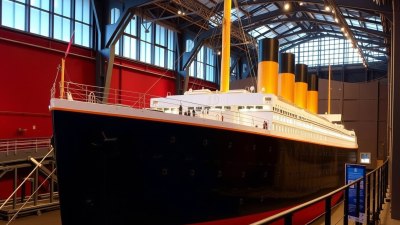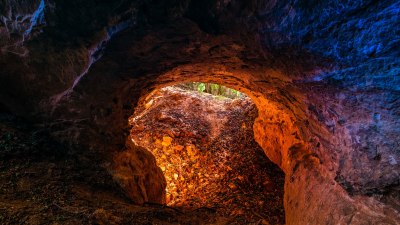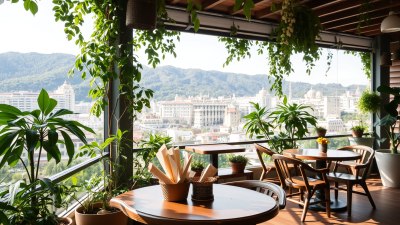Belfast’s Titanic Museum: Exploring Irish Shipbuilding
Discover the Titanic Museum in Belfast, a tribute to Ireland's shipbuilding history and the iconic Titanic.

Image created with Flux Schnell
Belfast, a city steeped in maritime history, is home to one of the most iconic attractions in the world—the Titanic Museum. Located in the heart of the Titanic Quarter, this museum stands not only as a tribute to the ill-fated ship Titanic but also as a celebration of Ireland's rich shipbuilding heritage. The museum tells the story of the Titanic's creation, launch, and the significant impact it has had on Belfast and shipbuilding across the world.
History of Shipbuilding in Belfast
The roots of shipbuilding in Belfast can be traced back to the 17th century when small ships were constructed for trade and fishing. However, it wasn't until the 19th century that Belfast began to emerge as a prominent shipbuilding center, largely due to the industrial revolution. Harland and Wolff, founded in 1861 by Sir Edward Harland and Gustav Wolff, became the most famous shipyard in Belfast, eventually known for producing the Titanic and her sister ship, the Britannic.
During the peak of shipbuilding in Belfast, the city was bustling with workers, and the demand for new ships was ever-present. The Titanic, launched in 1911, epitomized this era. At the time of her construction, she was the largest ship in the world and was regarded as a marvel of engineering. The Titanic Museum not only showcases the grandeur of the ship but also highlights the immense efforts of countless craftsmen who contributed to her creation.
The Design of the Titanic
The Titanic's design was ahead of its time, focusing on luxury and comfort. With large public areas, grand staircases, and opulent dining rooms, it catered to the wealthiest passengers of the time. The museum presents a detailed account of the design process, showcasing original blueprints and models. Visitors can explore recreations of the ship's famous interiors, such as the first-class dining room and the quaterdeck.
Moreover, the exhibition emphasizes the innovations that were integrated into the Titanic, such as a state-of-the-art wireless communication system and advanced safety features that unfortunately proved inadequate on her maiden voyage. The story of how the Titanic was built and designed is not just about the ship itself but reflects the aspirations and ambitions of an entire era.
The Maiden Voyage and Its Tragic End
The Titanic's maiden voyage commenced on April 10, 1912, from Southampton to New York City, with great fanfare and a sold-out occupancy. However, just four days into the journey, tragedy struck. On the night of April 14, the Titanic collided with an iceberg in the North Atlantic, leading to its sinking in the early hours of April 15, 1912. The Titanic Museum meticulously details the events of that fateful night, providing visitors with an immersive experience. Multimedia displays narrate the chaos on board, with testimonies from survivors and insights into the decisions that were made under pressure.
The aftermath of the Titanic disaster reshaped maritime laws and practices and heralded a new era of safety regulations. The museum not only addresses the tragedy but also pays homage to the victims and the legacy left in its wake. Various memorials and interactive displays ensure that the stories of those lost are not forgotten.
Education and Outreach Programs
The Titanic Museum is committed to educating the public about not just the Titanic but the broader context of maritime heritage. Throughout the year, the museum offers a variety of educational programs aimed at school groups, families, and tourists of all ages. Workshops focusing on shipbuilding techniques, maritime safety, and even the history of Belfast's industrial growth are available, allowing participants to engage hands-on with the materials and concepts.
Interactive exhibitions encourage visitors to dive deeper into the world of shipbuilding, with activities that include model building and exploration of the engineering principles that govern ship design. By fostering an understanding of the historical significance of shipbuilding in Belfast, the museum ensures that the legacy of craftspeople is honored and preserved.
Visitor Experience
With over nine interactive galleries, visitors can explore the construction of the Titanic, learn about the ship's features, relive the maiden voyage, and understand the impact of the tragedy. The climax of the visit often comes at the end, where guests can partake in a reflection space, allowing for a moment of contemplation on the significance of the Titanic and its legacy. The museum also features a café and a gift shop, where visitors can purchase memorabilia and unique items, further enhancing their experience.
Future of Shipbuilding in Belfast
As visitors step away from the stories of the Titanic and look towards the horizon, they can see the maritime industry flourishing in Belfast once again. Modern shipbuilding in the city is significantly different than in the past, with a focus on sustainability and innovative technologies. Companies are now investing in eco-friendly designs and offshore renewable energy resources, reflecting a shift in global priorities.
The Titanic Museum plays a pivotal role in highlighting this transition, illustrating how the principles of craftsmanship and innovation developed during the era of the Titanic continue to influence contemporary shipbuilding practices. Through exhibitions, talks, and demonstrations, the museum emphasizes the importance of adapting to modern challenges while remembering the valuable lessons from the past.
A visit to Belfast’s Titanic Museum is a journey through time, connecting visitors with the rich history of Irish shipbuilding and the poignant story of the Titanic. It showcases the heritage of a city that once dominated the shipbuilding industry and continues to foster innovation and progress. The museum stands as a testament to resilience, honoring the past while inspiring future generations to appreciate their maritime legacy. Whether you are a history enthusiast, a maritime aficionado, or simply looking for an unforgettable experience, the Titanic Museum offers insights and experiences that resonate far beyond its walls. Engage with the artifacts, learn from the stories, and leave with a deeper appreciation for the craftsmanship that built the Titanic and the evolution of shipbuilding in Belfast.











